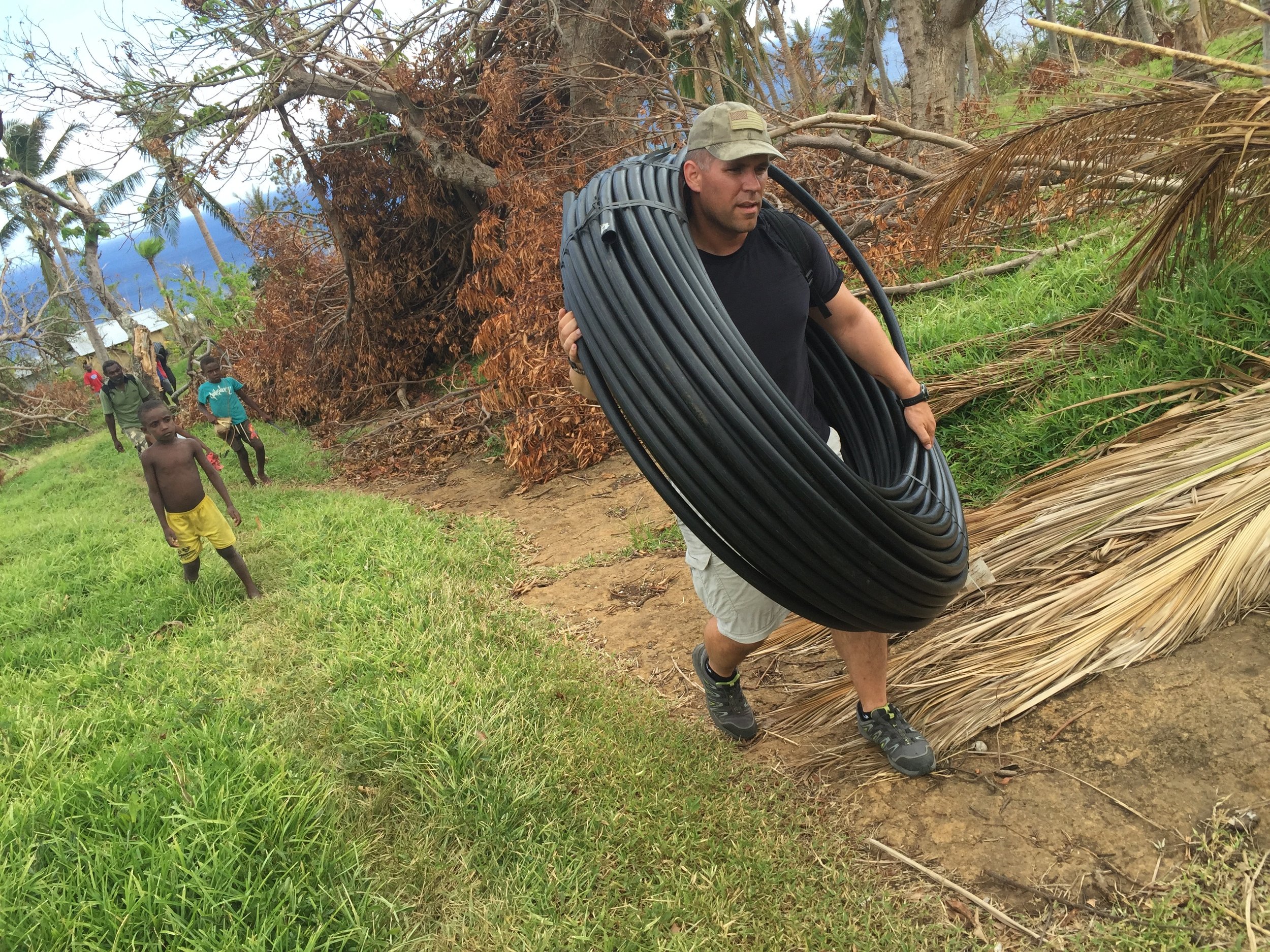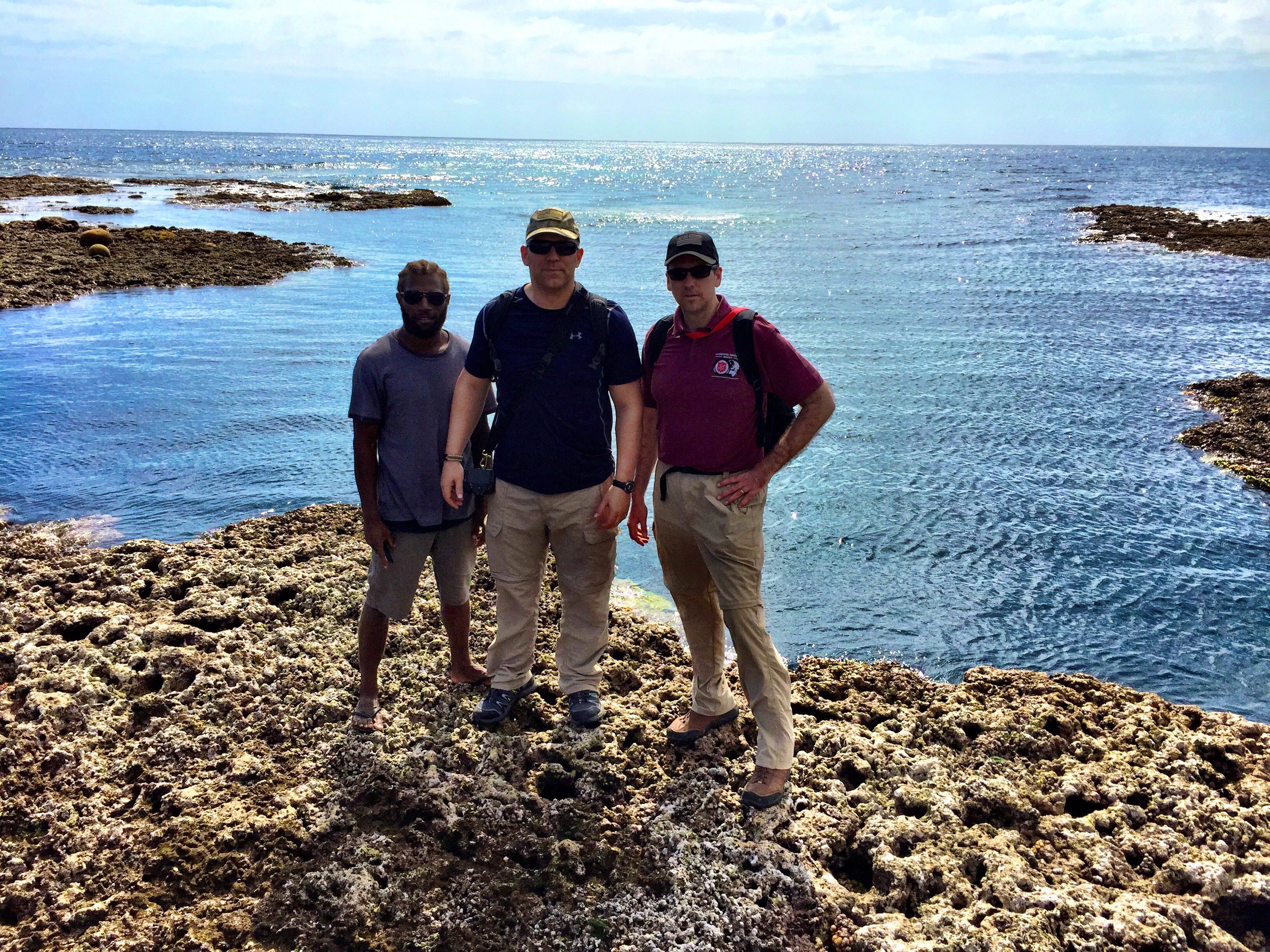Red Lightning Disaster Response: Cyclone Pam in Vanuatu


April 4, 2015
Written by Craig Arnold, Co-Founder of Red Lightning
The Disaster
On March 12, 2015 a category 5 cyclone came ashore in Vanuatu. After 2 days of violent wind and rain, 166,000 people on 22 islands of Vanuatu had been impacted; 90% of people sustained significant damage to their homes. Residents had no access to power. 110,000 had no or very limited access to fresh drinking water. In many of these villages, people rely on subsistence farming and fishing for food, so when gardens were destroyed and fishing boats were lost there were devastating consequences.
The Vanuatu government, the international humanitarian community, the UN, and the French, New Zealand, and Australian military responded quickly. On March 16th officials raised fears of a “second disaster” as early assessments showed that the most vulnerable communities in impacted areas would soon run out of water and food.
Our Response
In response, The Salvation Army deployed a small team. Early UN reports said logistics would be the biggest challenge in the response effort as many of the islands have only very small runaways (some don’t even have an airstrip), and even when aid could be delivered, villages are spread out along very difficult to reach coastal areas nowhere near airfields. I [Craig Arnold, Co-Founder of Red Lightning] was asked by the Salvation Army to accompany their team to lead logistics management.
After 24 hours in the capital city of Port Vila, our team agreed that receiving shipments here would be handled by other organizations. Militaries and aid organizations from multiple countries were focused on reaching people in the major cities, where most of the population resides. Therefore, we thought our efforts would be most impactful getting aid from Port Vila to hard-to-reach villages.
Our Focus
The next morning, one of the local Salvation Army contacts had a visit from his cousin who lived in Lounapiu, a small village located a 4 hour hike north of the airfield on the Northwest Coast of Tanna Island, (Tanna is 226 KMS south of Port Vila). He said no one from the government, or any aid agencies had been to their village. People were living in caves and their supply of clean water had been cut off by the storm's impact. He said it was even worse for the next 2 villages, Lous and Lowetal, which are located up the coast. Lous is another 2 hour hike north and Lowetal is a further 2 hour hike north from Lous.
The Assessments
Michael Shiffler, Co-Founder and CEO of Red Lightning, Steven, a local Salvation Army contact from Lounapiu, and I decided to do an assessment of these areas. We travelled by plane, boat, 4-wheel drive, and a 5-hour hike to arrive in Lounapiu. Conditions were even worse than described and things did get worse as we hiked north. We spent one night in Lowetal before heading back to report to the government and the UN.
After we delivered the assessments, the Secretary General from Tanna Island asked that the Salvation Army take the lead in providing food, water, and shelter to the 1,000 people living in these 3 villages.
Providing Drinking Water
Our immediate priority was to restore drinking water. Within 24 hours, The UPS Foundation agreed to cover the cost of charter planes from Port Vila to Tanna. Another NGO called Liberty for the Nations committed to partner with us to restore water quickly. We were able to fly in 1000 bottles of drinking water and arrange a beach drop of 5000 liters of water from a desalination ship. This was a good short-term solution, but clearly not sustainable. The charter plane's total capacity is only 1600 KGS and moving water in small increments is simply not efficient or sustainable.
Samaritan’s Purse was also active on Tanna, but they hadn’t gotten to these villages yet. We asked one of their hydrogeologists to accompany us to the village to provide water testing and help us with a strategy to restore the normal water supply. Dr. John, affectionately known as “The Water Guy”, made the journey with us to a spring about 1.5 KMS up the mountain from the Lounapiu. The Water Guy confirmed the spring water was safe to drink. Water was clean and flowing, but the pipe to the village was badly damaged. Lous and Lowetal source their water from a similar spring. The pipe from the spring down the mountain to a shared tank was intact and water was flowing, but the offshoots to get water north to Lowetal and south to Lous were non-operational.
The Water Guy suggested we bring in 5 KMS of PVC, connectors and hardware, and work with the local village plumbers to fix the pipes. We agreed, met with the chiefs, discussed the plan, and dispatched the Salvation Army team in Port Vila to procure the pipe and materials and get in on the next ferry from Port Vila to Tanna.
While we were working on the water supply on the ground in Tanna, the Port Vila team was also busy procuring rice.
Our Impact
On April 2nd we took 5500 KGS of rice, 5 KMS of PVC pipe and relevant hardware off of the ferry onto a beach on Tanna Island. The French military flew the pipe on helicopters to a soccer field in Lous. Lous is the “middle” community geographically and the field is the only appropriate landing spot in this area. The rice was divided into 7 small shipments. 2200 KGS went on 4x4 trucks to Lounapiu. The rice for 2 most northern villages went up the coast in an armada of fishing boats we hired for the day. By April 3rd Lounapiu, Lous, and Lowetal have rice to sustain them for 3 weeks, 6300 liters of drinking water, and all the tools and materials to restore the normal water supply.
Due to the success of the operation in Lounapiu, Lous, and Lowetal, the Vanuatu government asked The Salvation Army to expand its operations on Tanna and take on additional villages.
After We Returned Home
After Michael and I returned home, The Salvation Army continued to work in these areas to successfully deliver:
Hygiene kits supplied by Samaritan’s Purse to the 3 villages.
Seed packets to each family so they could restore their gardens.
Temporary shelter kits supplied by the Red Cross.
Thank you to our partners, The Salvation Army and The UPS Foundation.
